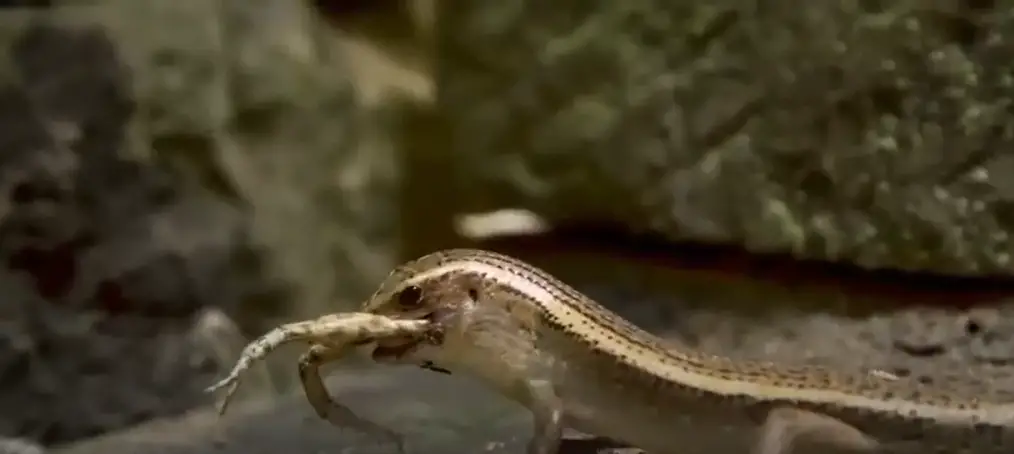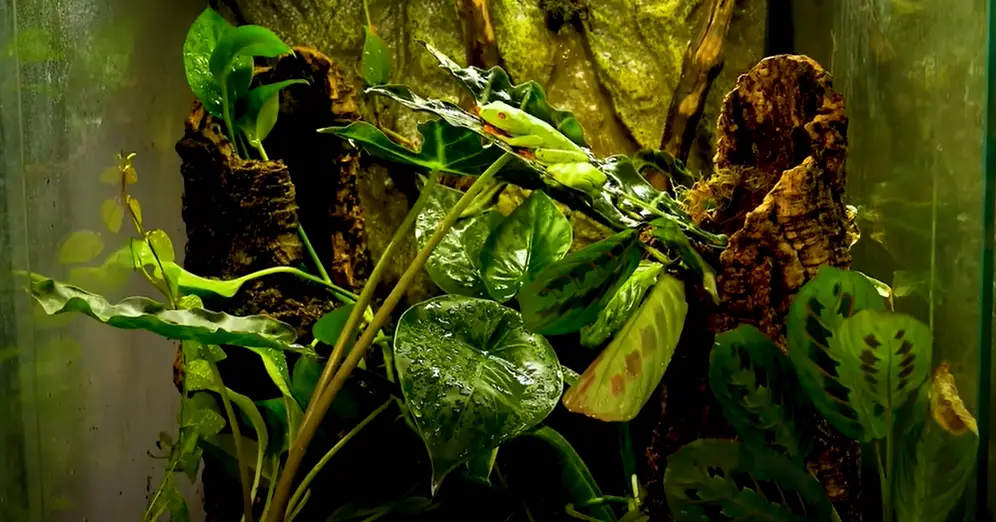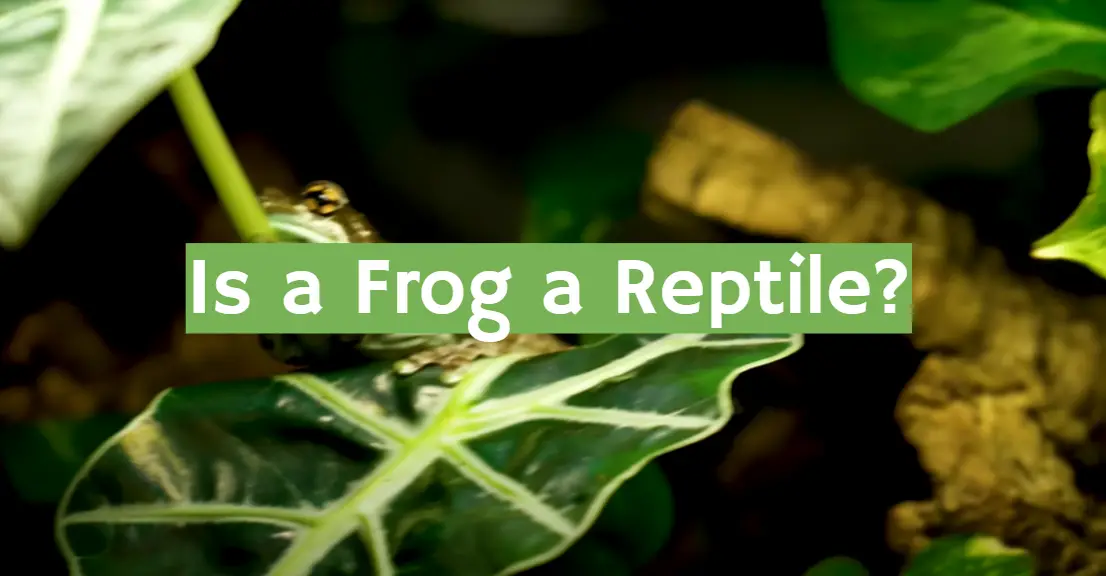Do you know what the difference is between a frog and a reptile? You might be surprised by the answer! In this article, we will explore the differences between frogs and reptiles. We will discuss their physical characteristics, as well as their habitats and diets. We will also look at some of the similarities and differences between these two groups of animals. Stay tuned to learn more about frogs and reptiles!
Amphibians vs Reptiles: The Difference Between Frogs and Reptiles
1. Amphibians have Breathable Skin—Literally!
One of the major distinctions between frogs and reptiles is that frogs are amphibians, while reptiles are not. Frogs have skin that can absorb oxygen from the air, meaning they can “breathe” through their skin. Reptiles, on the other hand, need to rely on lungs for breathing—they don’t have this kind of breathable skin.
The presence of this specialized type of skin also means that frogs do not need to live near water sources like many reptiles do. Instead, they can survive in a variety of different habitats, including dry areas and even higher elevations where there is less moisture. [1]
2. Amphibians are more Sensitive
Another difference between frogs and reptiles is the way their bodies regulate temperature. Reptiles are ectotherms, meaning they need to bask in the sun or take shelter in cooler areas to maintain a healthy body temperature. Frogs, on the other hand, are poikilothermic creatures. This means that their internal body temperatures fluctuate with environmental conditions, making them more sensitive to changes in temperature.
In order for amphibians to survive extreme temperatures, they must hibernate or migrate to establish new habitats that have suitable climates. Reptiles have an easier time adapting because they can move around and find areas with temperatures that better suit them.

3. Many Amphibians go through Metamorphosis
Perhaps the most distinct difference between frogs and reptiles is that many amphibians, including frogs, go through metamorphosis. This process involves dramatic changes in body shape and size as the frog transitions from a tadpole to an adult. Reptiles usually have more gradual growth patterns and remain relatively similar throughout their development.
Metamorphosis is an important life stage for frogs because it allows them to develop traits that help them survive in a variety of habitats. For instance, frog larvae tend to have larger tails than adults due to the need for greater maneuverability in water sources. Once they reach adulthood, however, this tail shrinks and they are better suited for terrestrial environments.
4. Amphibians have Squishy, Transparent Eggs
Finally, another way to tell the difference between frogs and reptiles is by looking at their eggs. Frogs lay hundreds of small, squishy eggs that are transparent in appearance. Reptiles on the other hand lay much fewer eggs that are usually hard-shelled and opaque.
The frog’s egg-laying process also involves an additional step—they need to carry the eggs around in their stomach until they hatch into tadpoles. This is why it’s important for them to have access to water sources where they can deposit their young so they can grow into adults.
5. Amphibians only Live in Freshwater
Although amphibians and reptiles both live in wet environments, they tend to inhabit different places. Frogs prefer freshwater habitats like ponds, streams, and marshes. Reptiles are more likely to be found in saltwater or brackish environments such as mangroves and estuaries.
And while some amphibian species can survive in dry areas, they typically require access to water sources during certain periods of their life cycle. This is why you will rarely find a frog living in a desert—they simply cannot survive without adequate moisture.
How are Amphibians and Reptiles Alike?
1. Amphibians and Reptiles have Backbones
Although they come from two different categories of animals, amphibians and reptiles share some fundamental characteristics. For one, both are vertebrates—meaning they have a backbone and other internal organs protected by a bony skeleton. This gives them greater mobility than invertebrates like insects or worms that do not possess a skeleton.
Additionally, both groups of animals have scales or scutes on their skin (although frogs usually have a smoother texture due to their moist and permeable skin). This helps protect the body from UV radiation and keep the animal hydrated in hot environments.
2. Both Creatures Hatch from Eggs
The similarity between frogs and reptiles is that they both hatch from eggs. Reptiles lay hard-shelled eggs that are left to incubate in the sun while amphibians deposit their soft, jelly-like eggs in water sources where they can be guarded and nourished by the parents until they hatch into tadpoles.

At first glance, frogs and reptiles may have more differences than similarities. But when you look closer, some common characteristics bind these two animal groups together. While frogs will never be considered a type of reptile, understanding how these animals are related helps us better appreciate the amazing diversity of life on our planet. [2]
3. They’re Found on Almost Every Continent
Amphibians and reptiles have one more thing in common: they can be found living in almost every continent on the planet. From humid rainforest to scorching deserts, these animals are experts at adapting to a variety of climates and habitats.
This impressive ability to adapt is especially true for frogs who inhabit a wide range of environments, from tropical jungles all the way up to high-altitude mountain ranges. It’s this incredible versatility that has allowed frogs to thrive over millions of years, even as other creatures struggle to survive in changing conditions.
4. Amphibians and Reptiles are Cold Blooded
The last similarity between amphibians and reptiles is that they are both cold-blooded. This means that their body temperature relies on the environment around them, rather than on an internal source of heat like we have as mammals.
Because of this, these animals are able to conserve energy by living in areas where temperatures remain relatively stable throughout the day. But it also makes them vulnerable to extreme temperatures which can slow down or even stop their metabolism.
5. Both can be Toxic
One of the similarities between frogs and reptiles is that some species have developed chemical or physical defenses to ward off predators. Frogs, for example, produce a toxin in their skin which makes them unpalatable to potential attackers.
Reptiles also have this ability, although it usually takes the form of sharp spikes or scales on their bodies. These features provide an effective deterrent to any animal thinking about taking a bite out of these creatures.
FAQ
Why is a frog a reptile?
Frogs are a unique species that have some characteristics of reptiles and others that are distinct from them. While frogs may appear reptilian, they actually belong to the amphibian class. This means that frogs share some general traits with reptiles, but also possess certain features which set them apart as their own independent lineage.
From a scientific standpoint, all amphibians, including frogs, share certain qualities with reptiles such as a moist body temperature and scaly skin. However, unlike reptiles which lay eggs with hard shells, most frogs lay eggs in water and those eggs don’t have protective shells or layers upon hatching. Additionally, while many reptiles generally will not feed their young after birth – making it up to the parent to protect and provide nutrition – most frogs will feed their young after they’ve hatched.
Frogs also have different respiratory systems than reptiles. While reptiles usually breathe through their lungs, frogs absorb oxygen through their moist skin as well as their mouths and nostrils. Reptiles typically have four limbs that are used for walking while the back legs of frogs are used primarily for leaping or swimming in the water.
Yet another distinct trait of frogs is that they undergo a process called metamorphosis to transform from aquatic larvae into adults. This allows them to adapt to diverse habitats and establish themselves in various climates around the world. As such, it provides an evolutionary advantage when compared to some reptiles which may be unable to effectively cope with sudden environmental changes.
Overall, frogs do share some characteristics with reptiles but their features and behavior set them apart significantly. The amphibian class contains a diverse range of species that are genetically distinct from reptiles and provide unique benefits to the environment as well. Therefore, when it comes to determining whether a frog is a reptile, the answer might surprise you.

Can a reptile be an amphibian?
No, a reptile cannot be an amphibian. Reptiles are ectothermic vertebrates whereas amphibians are cold-blooded invertebrates. Reptiles lay hard-shelled eggs that incubate in the sun while amphibians deposit their soft, jelly-like eggs in water sources where they can be guarded and nourished by parents until they hatch into tadpoles. [3]
Is a turtle a reptile?
Yes, a turtle is a reptile. Turtles are part of the order Testudines which contains many species that differ in size and appearance. Since turtles possess scales on their skin, they qualify as reptiles according to scientific classification and share many characteristics with other members of the order such as lizards and snakes. Additionally, like other reptiles they rely on external sources to regulate their body temperature and produce leathery eggs with hardshells. As such, turtles are classified as reptiles due to their physical features, behavior, and genetic structure.
Is a fish a reptile?
No, a fish is not a reptile. Fish are aquatic vertebrates that live in both saltwater and freshwater environments. They have scales on their skin, gills for breathing underwater, and fins for swimming. Reptiles are ectothermic vertebrates with hard shells that protect them from predators and the elements. They lay their eggs on land, usually in sandy or muddy areas where the temperature remains relatively constant. The eggs are rigid and covered by a tough shell. [4]
Useful Video: DO NOT GET A PET FROG, They Suck! Three Reason’s Why!
Conclusion
It’s easy to see how people might mistake frogs for reptiles–they have many similarities, after all. But upon closer inspection of their anatomy and lifestyle, it’s apparent that these two groups couldn’t be more different. We hope this article helped clear up any confusion and that you now feel confident in your amphibian identification skills! If not, or if you have any other questions about frogs or reptiles, don’t hesitate to reach out to us. We love hearing from curious frog enthusiasts just like you!
References:
- https://sciencing.com/animals-breathe-through-skin-7815623.html
- https://www.dictionary.com/e/amphibians-vs-reptiles/
- https://www.sheddaquarium.org/stories/amphibian-or-reptile-here-s-the-difference
- http://www.differencebetween.net/science/nature/animals-nature/difference-between-fish-and-reptiles/






Leave a Review